NFTs: Sound Investment or the Latest Art Craze?
written by Patrick Morgan
NFTs, crypto-currency, the blockchain. These are the investment buzzwords of Millennials and Generation Z. Digital wallets and virtual assets are certainly here to stay, but can they transform how we see, feel and appreciate art ? Or, for that matter, how we buy and sell art?
Mike Winkelmann (aka Beeple), GAX-447 (detail), 2015. Image: Mike Winkelmann / License: CC BY 4.0
What is NFT?
For those of us born before 1980, a quick explanation; Non-Fungible Tokens (NFTs) are unique, digital creations, attached to a blockchain (a system which records transactions, which in turn, are stored on several thousand computers in peer-to-peer networks) and ultimately, placed in an online digital wallet similar to PayPal or Apple Pay, to be bought, sold or traded.
Submit your Art, Antiquities and Collectibles for Appraisal here!
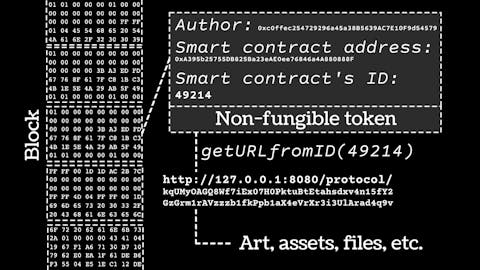
Illustration of a non-fungible token generated by a program designed to automatically execute contract terms. Image: CactiStaccingCrane / License: CC0
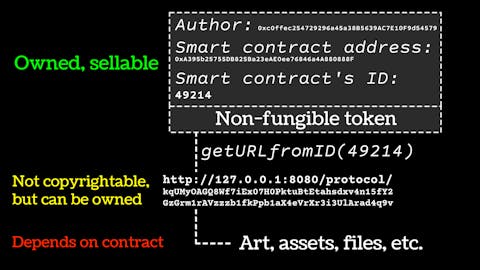
A diagram showing the right to own of an non-fungible token and linked file. Image: CactiStaccingCrane / License: CC0
How Did NFT Conquer the Art Market?
Interest in NFTs has always been in-step with the crypto-currencies marketplace. The stock and media buzz around the next, best, latest digital creations has driven the digital speculative investment train into a frenzy which peaked in late 2021 with the sale of Mike Winkelmann’s, (aka Beeple), original work of NFT digital art titled “Everydays; The first 5000 days” selling at Sothebys for a staggering 69.3 million USD, making him one of the highest grossing living artist today.
Related: The 10 Most Expensive Living Artists

Mike Winkelmann (aka Beeple), GAX-447, 2015. Image: Mike Winkelmann / License: CC BY 4.0
Crypto-Currencies and the Market Speculations
At the same moment, bitcoin was peaking in value at just over 68,000 USD per coin. The market has indeed dropped in spectacular fashion since then and today the value of a bitcoin is closer to 20,000 USD. The capitalised value of the crypto-currency markets was over 3 Trillion USD in November 2021 and today it’s total value is under 1 Trillion USD. Digital speculation is a very new and relatively uncharted area of investment, and as with all things new and unproven, there are bound to be volatile shifts in market values.
NFTs and Art
Surveying recent auction prices for NFTs on popular platforms like LiveAuctioneers, the pieces that have sold, often sell on the first or second bid, thereby leading one to believe the market has lost most of its early momentum. And when speaking of NFTs, one should not forget that the essential nature of all art is its creative nature and ability to evolve. Marcel Duchamp’s most famous work, Fountain is an inverted urinal, signed “R. Mutt”, that literally turned the art world upside down in 1917 by creating one of the world's first truly controversial works of art, and what we now call, conceptual art. Almost sixty years later, Damien Hirst, one of the leading members of the Young British Artists, created another work of conceptual art, his groundbreaking piece; The Physical Impossibility of Death in the Mind of Someone Living. The piece is actually a preserved Tiger Shark, submerged in formaldehyde and displayed in a large glass case. In 2005, the work was sold for over 10 million USD by Galerie Charles Saatchi. The latest in the ever evolving world of artistic creation is AI art which is made with mathematical patterns and digital algorithms and there’s Generative art, which is created using algorithms on an entirely autonomous system. These along with NFTs are all new and original evolutions of the artistic expression which will continue to find new formats.
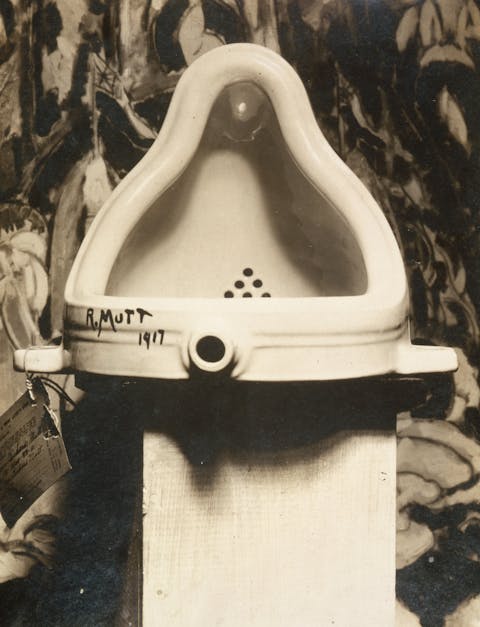
Marcel Duchamp, 1917,Fountain at the291 (Art Gallery)following the 1917 Society of Independent Artists exhibit, with entry tag visible. The backdrop isThe Warriors by Marsden Hartley. Image: Alfred Stieglitz / License: Public Domain
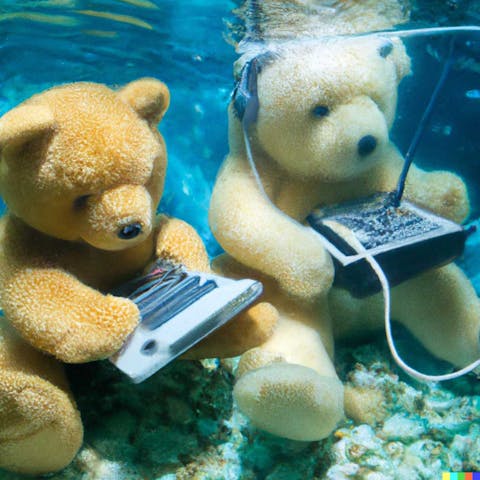
An image generated by DALL-E 2 based on the text prompt "Teddy bears working on new AI research underwater with 1990s technology". Image: DALL-E / License: Public Domain
NFTs and the Environment
Another aspect, unique to NFTs, is the Carbon footprint. An NFT cannot exist outside of the digital universe, therefore to maintain its existence, it must use a certain amount of energy which relies on blockchain technology. A recent study suggests that one NFT uses approximately 200 kilograms of cO2, an amount sufficient to power an average household for an entire month. When seen in this context, NFTs present a sustainability problem unique unto themselves when compared to the classical definition of art.
Digital vs Traditional
Traditional arts are timeless, emotional objects that can be found in every corner and every culture around the world. The splendour of looking up at the pyramids of Giza, and the relief carvings which adorn the walls of the temples, or the artefacts found within the Egyptian tombs. An African mask, masterfully carved in the 19th century, which perhaps inspired Picasso and the birth of Cubism. Or Leonardo da Vinci’s Mona Lisa, probably the most famous work of art in the world. All these works of art have one thing in common; a universal feeling of awe and emotion when one has the chance to see and confront these works of art, first hand…Conversely, in the universe of NFT art, there is no physical presence. If there is no screen, there is no art. If there is no electricity, there is no art. An NFT cannot be found on a mountaintop, on a deserted island, or in the tomb of an ancient civilisation. Or for that matter, it’s virtually impossible (pun intended) to decorate one’s home with NFTs. Only physical, traditional works of art can be appreciated in one’s home, or in a museum, creating a feeling of comfort and pleasure by surrounding oneself with beauty.That said, my 13 year old son is an avid collector of NFTs. He has spent close to $200 on Fortnite skins (whatever those are…).
Related: Digital Art Makes History at Auction
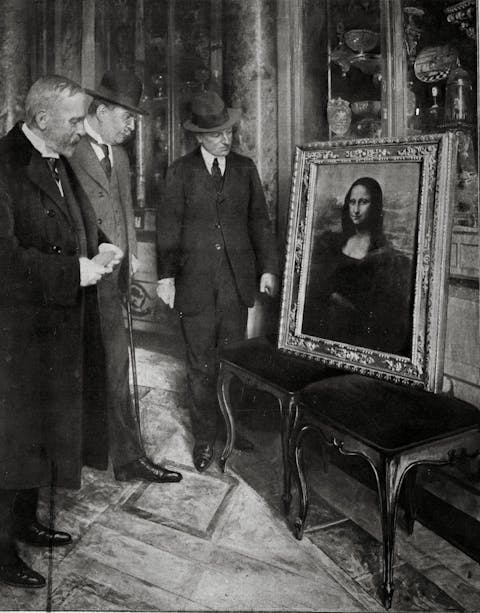
The Mona Lisa in the Uffizi Gallery, in Florence, 1913. Image: Public Domain
What is The Future of NFTs in the Art World?
There’s no doubt NFTs will find their place in the world of art and collecting sooner or later, but it is just too soon to say. Perhaps it would be better to view NFTs as a category of collecting, similar to stamps or Hummel figurines. Something that is indeed unique but not something that will ultimately replace the time honoured traditions of classical art forms. NFTs are certainly popular with the digital gaming community and they have numerous applications for the ever evolving digital universe. So to answer the question; “ Are NFTs a sound investment or the latest art craze ? Neither, but NFTs will continue to evolve along with everything else in the digital universe and they will certainly be around for years to come.
Submit your Art, Antiquities and Collectibles for Appraisal here!
Patrick Morganis a Dealer and Expert in Tribal Arts and Art Generalist who has been living in Paris since 2002. He began his career field collecting textiles and tribal artefacts in the Golden Triangle of Thailand, Laos and Burma in the late 1980’s and by 1992 was making several trips a year, exclusively to Mali, sourcing textiles and the ritual arts of the Dogon, Senufo and Bambara cultures. He began exhibiting these finds in addition to pieces from important American collections in 1998 showing at the major US Tribal Art Fairs in San Francisco, Santa Fe, New York as well as the European fairs in both Paris and Berlin. He has worked for several European auction houses as both consultant and expert.

